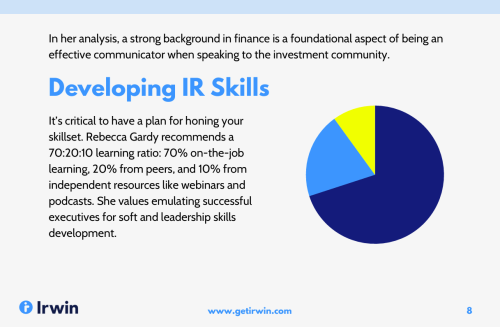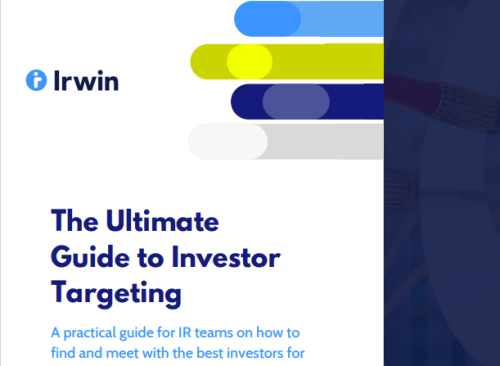Discerning ownership for public companies is a complex and often frustrating matter for issuers and advisers alike. Combing through regulatory filings is cumbersome, prone to error and can often lead to data comparisons that are akin to comparing apples with oranges. There are many financial data platforms available to do the work for you but, even if the publicly reported data is perfect and timely, issuers are still going to miss a significant portion of their shareholder base that falls under the non-reporting category.
The unfortunate truth is, given the way the financial system is set up, there is nothing issuers can do to ever be 100 percent sure of their shareholder base. By using today’s technology and data, however, a proactive IR strategy can get you closer than ever.
So what are the options for shareholder monitoring? There isn’t a one-size-fits-all solution because the reporting rules governed by the different global regulatory regimes require unique techniques and datasets to put the pieces together. For example, in North America, in addition to reported filings, the two other options available include stock surveillance and non-objecting beneficial owner (Nobo) data, commonly known as the Nobo list.
The Nobo list is an increasingly important dataset that allows companies to access frequent insight into their non-reported shareholder base, which includes retail investors, family offices and some hedge funds. This can represent a significant portion ranging from 20 percent to 80 percent of a total shareholder base, depending on the size of the company.
In other regions, such as the UK and Australia, issuers and their advisers have the right to request information from investors as to whether or not they own their shares. In the UK, this law is called Section 793. The analysis and aggregation of this data are known as shareholder registry analysis and can be 80 percent to 95 percent accurate in determining a company’s shareholder base. Pretty good!
Why shareholder monitoring is important
People often ask me why shareholder monitoring matters. After all, shareholders can freely come and go and, if you run your business well, the markets should reward good performance with a growing stock price.
Ultimately, it boils down to the fact that for a public company, investor relations is an increasingly strategic tool to manage a company’s cost of capital. There are various inputs to the cost of capital, but arguably the most controllable input is the company’s beta, which represents the stock price’s volatility measured by the standard deviation of returns over a certain period.
Therefore, to lower the beta and the cost of capital, companies should be targeting investors that hold the stock for prolonged periods and are infrequent traders (for smaller companies in need of greater liquidity, this can be achieved through the use of market-makers). These investors tend to have a longer-term investment horizon, are aligned with management and the company vision, and are open to consistent dialogue. Without knowledge of who your shareholders are, IROs and management risk wasting precious time on investors that do not represent a good return on investment.
Here are some additional examples of the benefits enjoyed by companies that are in tune with their shareholder base.
- Gauging risks & opportunities: There’s a direct correlation between shareholder monitoring and your ability to assess ownership risks – shareholders selling – and opportunities (shareholders buying more). Irwin has found it is nine times more likely that current shareholders will acquire more shares than for net new investors to become shareholders, so you had better know who your shareholders are.
- Efficient and cheaper financings: Companies with a strong pulse on their shareholder base can execute financings more efficiently in two ways. First, by engaging in more private placements and managing these financings without the use or diminished use of an investment bank. And second, if you are using an investment bank, the more you know about your shareholders – which tend to be the largest buyers of financings – the more negotiating power you have in their fee structure.
- Share price stabilization: This ties into the cost of capital equation but, even if you have a long-term shareholder that is selling stock in the open market, being able to identify the seller allows you to broker a negotiated transaction with known buyers. Block sellers and buyers are typically pleased to find and be aware of each other rather than indiscriminately trading shares on the board, which would likely have more of a negative price effect for both the seller and the buyer.
- General relationship management: Ultimately, IR is a relationship management function. The more you can build a relationship, the harder it will be for your investors to break up with you and sell out. Further, referrals are surprisingly prolific among investors. Just like any sales role, therefore, the only way to get referrals is by building strong relationships.
As a result of various industry and regulatory changes in capital markets, such as Mifid II and sell-side counterparty consolidation, proactive IR is becoming increasingly mission-critical to the success of a public company. Shareholder monitoring is the foundation of proactive IR, so it’s important to understand the various nuances in ownership that are specific to your company. It may require extra work upfront, but the payoff will far surpass any short-term headache and will allow you and your company to fully realize the benefits of being publicly traded.
David Whyte is co-founder and CEO of Irwin, a capital markets technology company built for public companies and their advisers.










